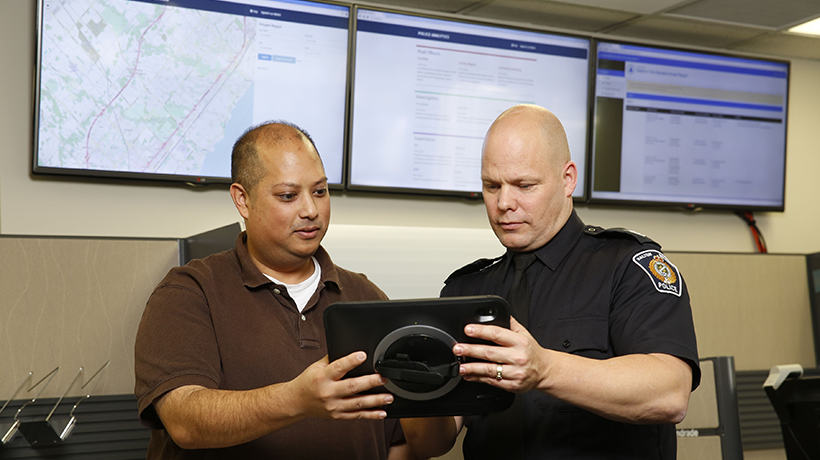In my previous post, I talked about law enforcement agencies having access to their data and information whenever and wherever because of inPURSUIT WebRMS‘ cloud capabilities. Now, let’s discuss who benefits from a records management system (RMS). An agency’s RMS doesn’t just support law enforcement officers, it also supports the whole agency from the time an incident or case opens until it closes – and even longer in the form of data and analytics.
Who Uses the RMS?
Whether it’s a single agency or used in a multi-agency environment, an RMS serves all facets of law enforcement operations and administration; whether you are a property custodian, a crime scene examiner, a records clerk, a crime analyst, a front line officer, a supervisor or a police manager. An RMS isn’t just for recording criminal incidents – it makes important data available to personnel in all areas of an agency. It supports jobs and responsibilities like incident response, traffic stops, field interviews, case work, investigations, crime analysis, asset management, fleet management, human resources, reporting, and more. Importantly, an effective RMS integrates information across modules to support these varied business needs.
Why Does It Matter?
Because data and information touch all facets of law enforcement, it is important to have an organized and innovative RMS with recognizable benefits by staff members. To ensure an agency is taking full advantage of their RMS, it’s also important to look at what information is going into the system and why that matters. Most agencies have their RMS integrated with their CAD and mobile solutions, which allows for fast, easy data access and query without the need for redundant data entry. An RMS must also have the ability to support the integration of multimedia, such as images and document workflows. These integration pieces result in much faster information identification, easier data searching and analytics, and improved officer and citizen safety.
Where can inPURSUIT WebRMS Help?
We have an excellent case study that shows how the implementation of inPURSUIT WebRMS can greatly improve managing criminal case data. The U.S. Coast Guard Investigative Service (CGIS) implemented our WebRMS solution to streamline the collection, sharing, and reporting of criminal investigation records. CGIS personnel previously used paper-based and redundant data entry methods to manage records, which limited the amount of data readily available and made the data mining and reporting process tedious and time consuming. When CGIS switched from that process to WebRMS, they were able to greatly improve productivity, reduce redundant data entry, and provide key metrics to guide decision-making. WebRMS also allowed CGIS agents to establish patterns and links with relational database elements, which enabled easier identification of possible crime trends. This resulted in CGIS being much more proactive during their investigations rather than reactive. For CGIS, not only did their agents see an improvement when imputing and reporting on data, but their analytics department was able to use the data in a much more preemptive way, which they weren’t able to do with their paper-based processes.
In my next blog post, I will dive deeper into the specific capabilities inPURSUIT WebRMS has to offer. If you’re interested in learning more about inPURSUIT WebRMS, we’re hosting a webinar and demo April 19th. Register today!















